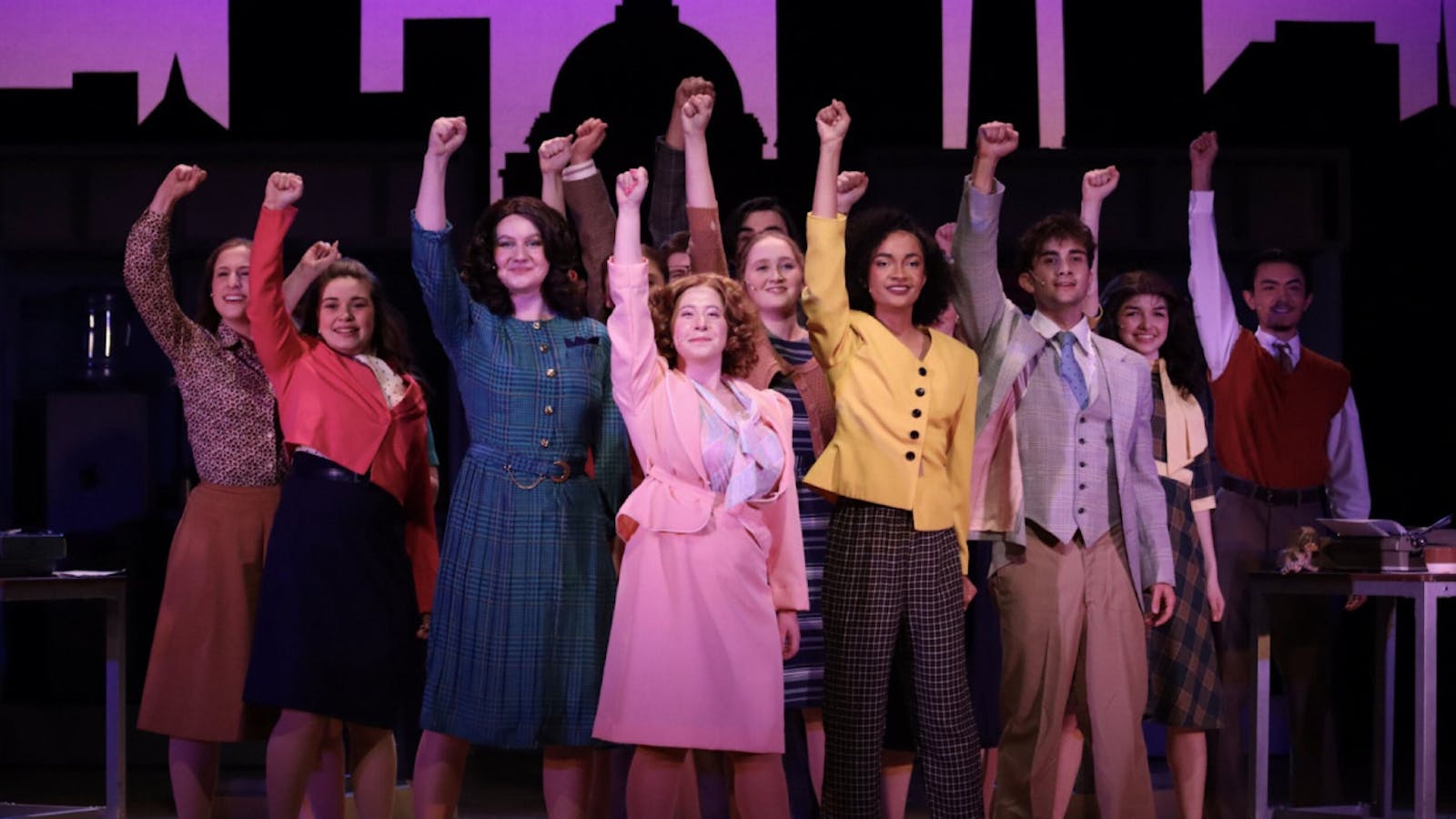
Featuring music and lyrics written by Dolly Parton, “9 to 5: The Musical,” presented by American University’s Department of Performing Arts, delighted audiences at the Greenberg Theatre from March 17-19.
Directed by Nikki Mirza, the Department’s production notably took place against the D.C. skyline, emulated by a large set piece with silhouettes of the United States Capitol and the Washington Monument. The lighting throughout the show looked beautiful against the outline of the buildings, making blue skies and sunsets feel familiar to where the University and the Greenberg are located.
The musical is a comedy, but the director, dramaturgs and cast emphasized the importance of treating the issues in the show — such as inequality, misogyny, sexual harassment and sexism — seriously.
In her director’s note in the show’s program, Mirza wrote, “[The show] both celebrates women and demands equality. Although this is a comedy, it was important to me that everything be rooted in the truth from which it came.”
The show itself follows three women named Violet, Judy and Doralee who find strength and love in their female friendship while fearlessly taking on the misogyny, sexism and harmful stereotypes in their workplace.
Violet, played by Londyn Joleigh, a freshman in the College of Arts and Sciences, is hardworking and no-nonsense, with the dry humor and bitterness of a woman who has yet to get the promotion and recognition she deserves. Joleigh also plays to Violet’s nurturing and more empathetic side, giving the character depth and emotional intelligence.
Violet’s masterful hand on the corporate workplace infected with toxic masculinity is contrasted by the sweet, resilient and bumbling Judy, played by Ava Wilson, a senior in CAS.
Not only was Wilson’s vocal performance impressive, but so was her characterization of Judy as a widow who finds her strength in self-discovery, joining the workforce for the first time after divorcing her husband.
Rounding out the trio is Doralee, played by Kate Lurie, a senior in CAS. Doralee brings the fun, country flair and southern charm, but is also presented by Lurie as a woman unafraid of being vulnerable or speaking her mind, regardless of what people think of her or her hometown’s culture.
From start to finish, “9 to 5: The Musical” was filled with energetic dance numbers about the workforce, as well as elaborate, campy numbers about the fantasies Violet, Judy and Dorelee have about how they would get back at their boss, Mr. Hart, for all of the nasty things he does and says.
Dylan Toll, a sophomore in CAS, makes Mr. Franklin Hart Jr. is perfectly hateable. His ridiculous, raunchy physical comedy and gross humor make for a perfect common enemy audiences can’t help but want to fall from power, especially during the trio’s marijuana-induced, murderous fantasies.
The fifteen minute intermission was taken full advantage of, with a presentation of interviews from cast members’ families and members of the community about what corporate life in the 1970s and 1980s was like and the challenges they faced firsthand within their places of work.
The honesty and truthfulness of the interviews made for a thoughtful break between the production’s fun music and laughs, giving more emotional context to the real sexism women experienced at the time.
Closing out Act II and the rest of the show, the full cast presented stunning vocal performances, with rich and warm harmonies in nearly every number. A real sense of camaraderie and togetherness radiated throughout the cast that made the audience invested in the well-being of not only the leading ladies, but every person in the fictional workplace.
In the end, Violet, Judy and Doralee not only make their workplace a better place, but are able to enjoy both their friendship and success together, instead of being pitted against each other or demeaned as Mr. Hart’s “girls.”
The Department of Performing Arts’ next performance at the Greenberg Theatre will be the Dance Department’s “DANCEWORKS 2025,” running from April 11-12. Tickets can be purchased through the Department of Performing Arts website.
This article was edited by Jessica Ackerman, Marina Zaczkiewicz and Abigail Turner. Copy editing done by Olivia Citarella and Emma Brown.
